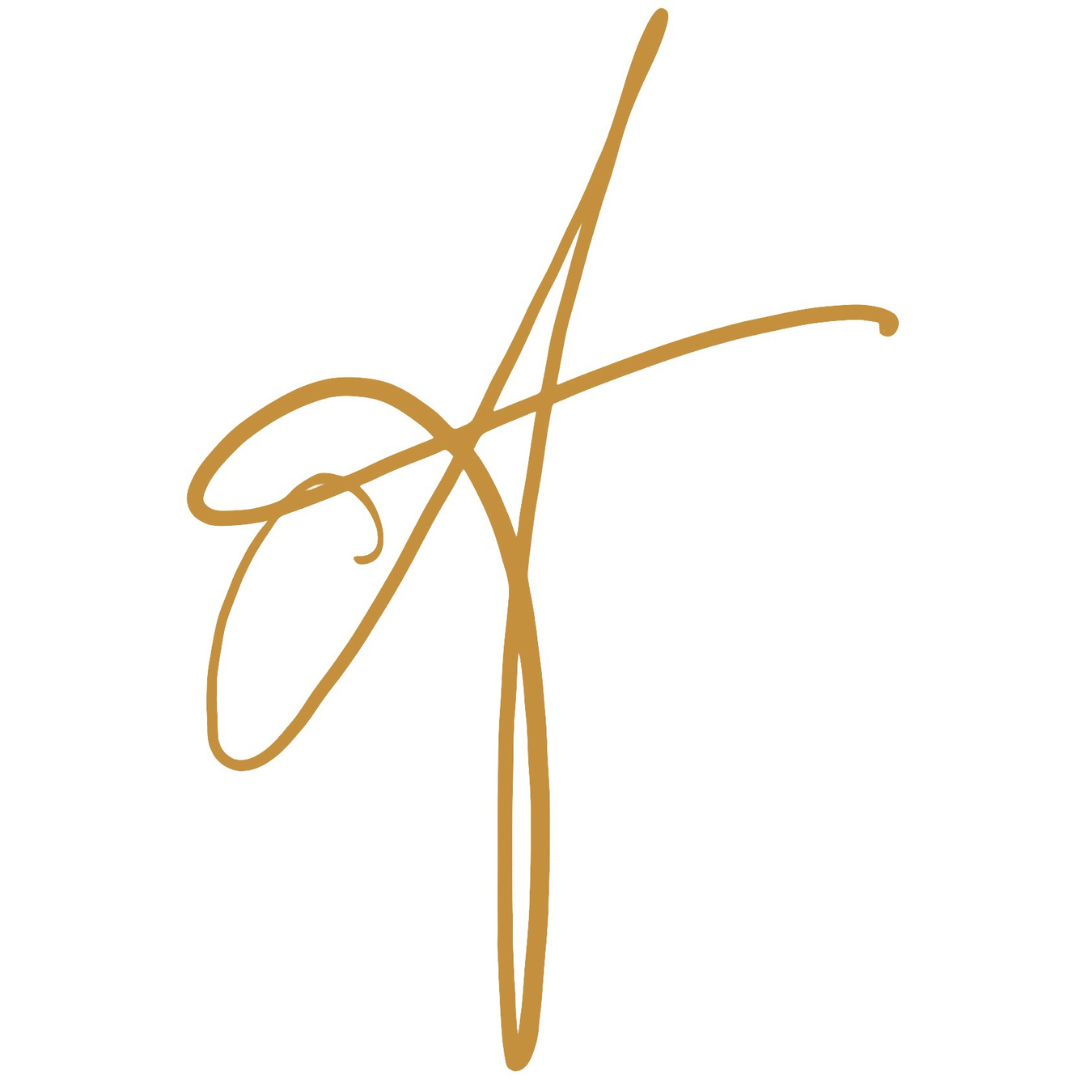

peacock and peacock feathers
The peacock was one of Tiffany’s favourite motifs.

Blue Peacock with Apron Table Lamp, a Tiffany Studios lamp in The Neustadt Collection
At the upper edge of the apron – its widest point – this globe is 18½” across. At the bottom of the slightly concave apron, it measures 18″ in diameter. The shade is 8″ high and has a 4″ aperture. The design, in its essentials, is not unlike that of the Small Peacock. However, its colour scheme is infinitely more original and exciting, which undoubtedly accounts for having been accorded the dash number. Although its colour scheme is breathtaking, the Small Peacock portrays the typical feather tones more truly.
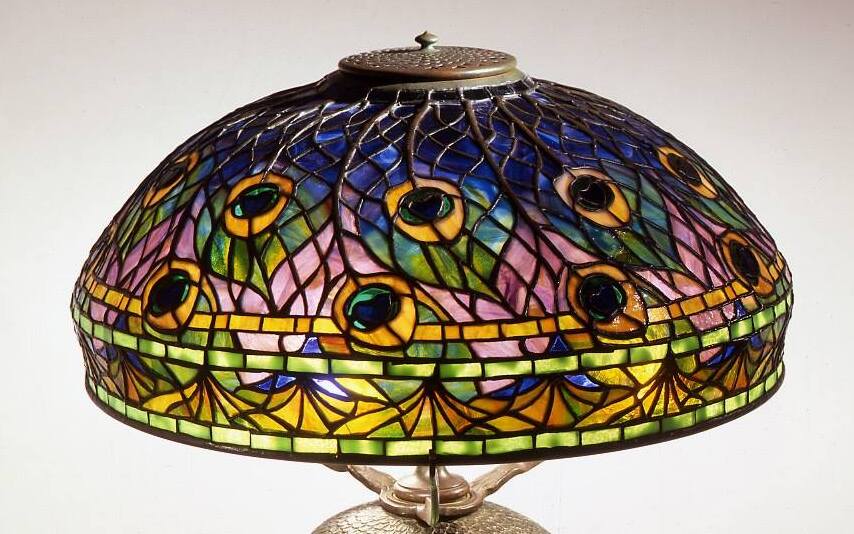
Peacock Tiffany lampshade with twenty peacock eyes
The twenty peacock eyes are arranged in two staggered rows; their purplish-blue centres are surrounded by a narrow green rim, which is set within a broader belt of gold.
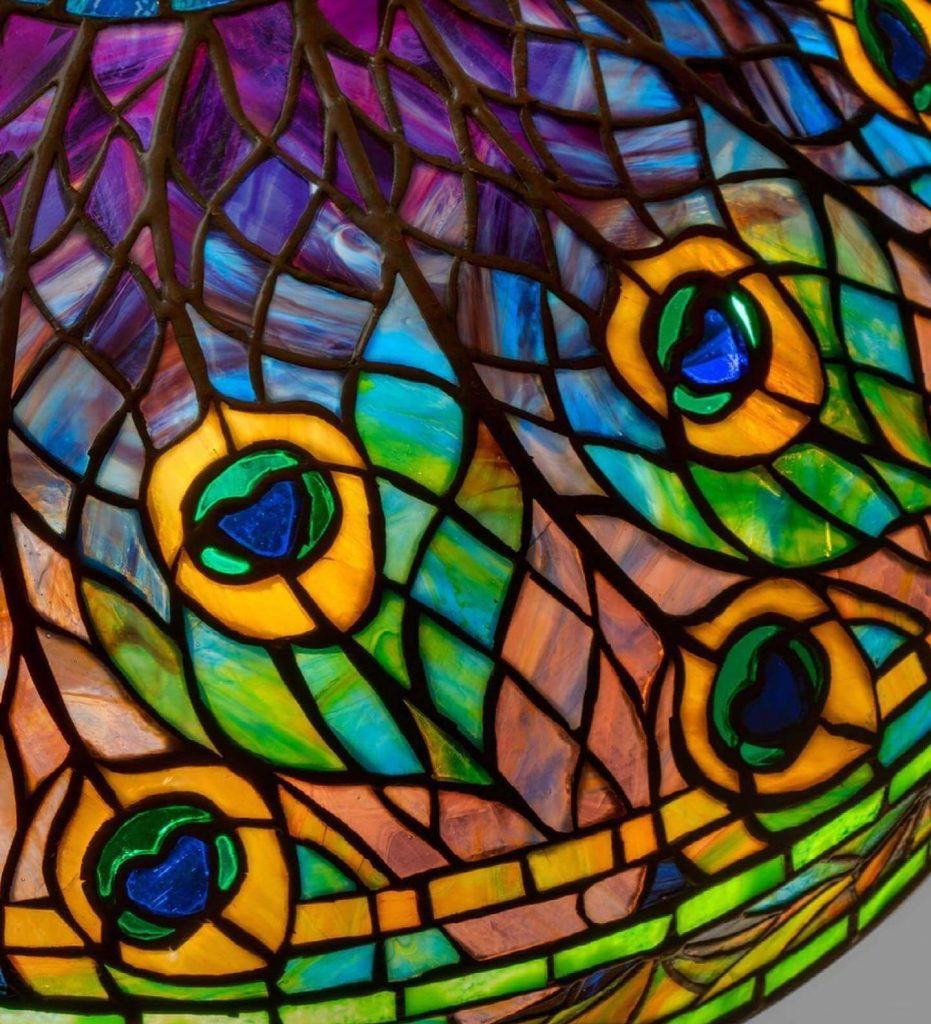
Blue peacock eyes as stained glass

Peacock eyes in nature
On the upper part of the globe, the feathers are deep blue with glorious striations of red. In the centre, some of the feathers gradually shift to blue, then, around the upper row of eyes, to bluish-green mottled with orange. Around the lower row of eyes, the predominant colour is pink with a tint of blue.

Horizontal rows at the lower half of the Peacock Tiffany lampshade
A thin horizontal row of golden-orange glass interrupts but fails to contain the feathers; cut off again by a second row of mottled green glass, they re-emerge within the apron. Here they meet blue, orange-red and orange-green feather tips, rising from the lower border row of mottled green; the latter is identical to the upper apron row. A row of dark purple rectangles rings the aperture. The purplish-blue glass is fibrillated throughout the globe, emitting a soft glimmer.
The quills are heavy and project even more prominently than those in the Small Peacock. They are also less random in their course: each runs unwaveringly to one of the peacock eyes. Their barbs extend laterally, in a systematic style, forming an intricate network over the entire globe.

Peacock Tiffany Studios lamp base
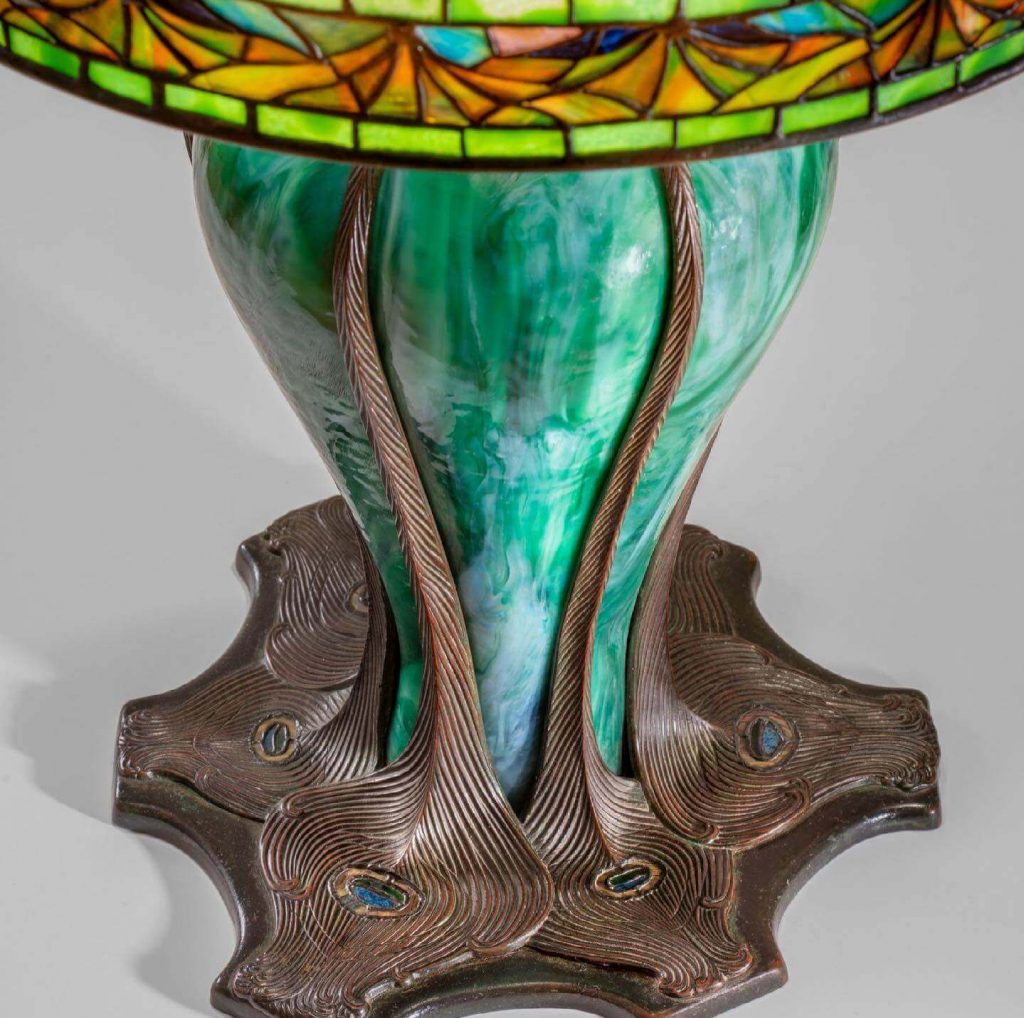
Mosaic “eye” at six peacock feathers centres
The Peacock with Apron is supported by the integrated Peacock Base, whose 12″ scalloped platform is decorated with a raised design of six peacock feathers, each with a mosaic “eye” at its centre. The six long quills run upward and, in so doing, enclose a green-marbled-with-yellow glass amphora, which makes up the main body of the base. Although it is made of six separate glass sections, it gives the vase a glass-in-bronze effect, the metal represented by the six feathers. The illumination of the base is an adaptation.
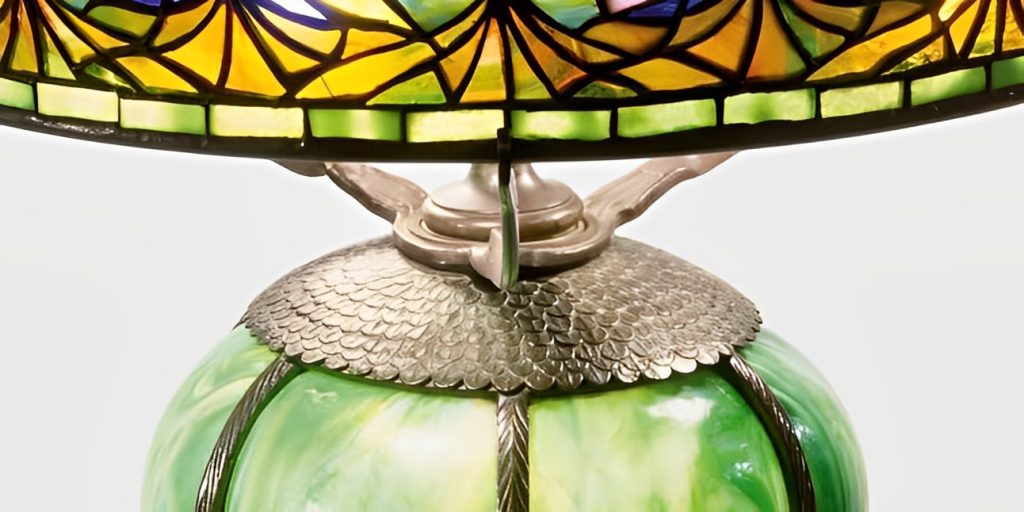
Tiny plumage at the top of the Peacock lamp base
At the top of the vase, the quills meet with a heavy bronze lid, completely covered with a stylised pattern of tiny plumage. From this, three curved arms rise to support the shade.
